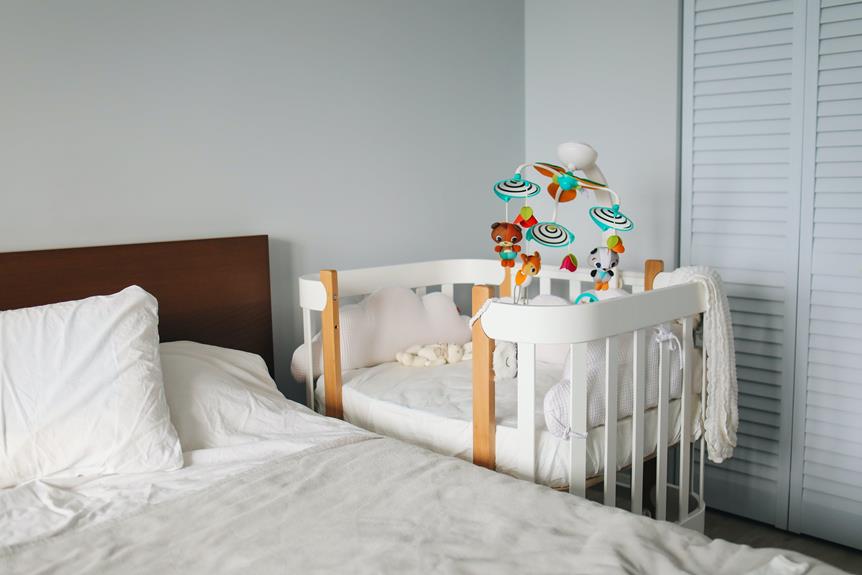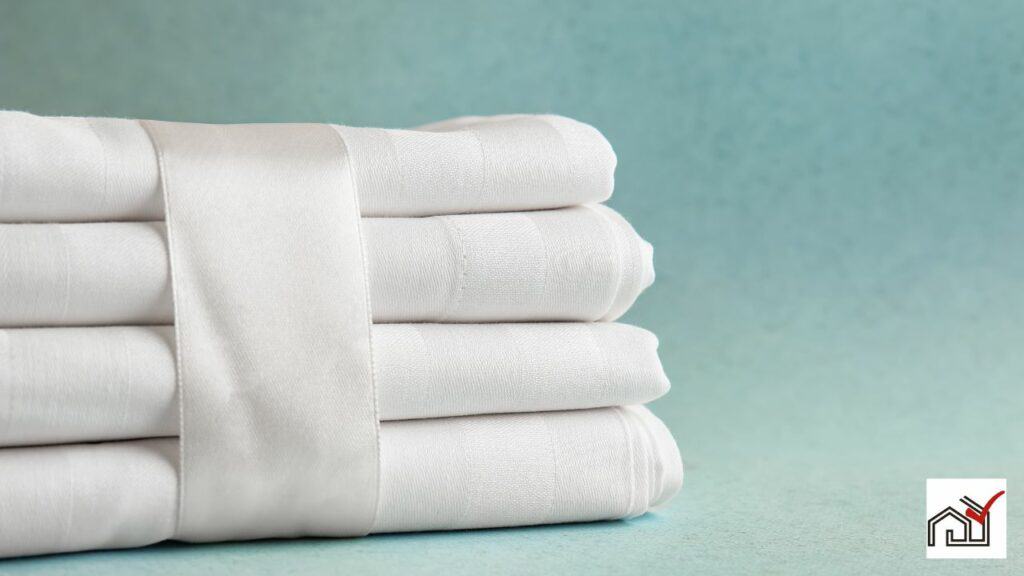Comforters and duvets should have covers. Covers protect them from dirt, spills, and damage, which extends their lifespan. They also help with cleanliness by blocking allergens and are easy to wash.
Covers can change the look of a bedroom quickly and affordably. They can also make the bedding softer and warmer.
Using covers is practical and improves bedding care and comfort.
Understanding Bedding Basics
A duvet is a soft bag filled with materials like down, feathers, or synthetic fibers, used as the top layer of bedding for warmth. It's adaptable for different seasons with varying weights. A comforter, in contrast, is usually thinner, lies flat on the bed, and often has an integrated design.
A duvet cover is a protective, washable layer for a duvet, providing hygiene and the option to change bedroom decor. It's not essential for comforters, but using one can protect and prolong their use, offering the flexibility to update the bedding style.
While duvets require a cover for maintenance, comforters can be washed directly without removing a cover, offering ease of cleaning.
The Purpose of Covers
A duvet cover primarily protects the duvet or comforter from daily use, spills, and stains, which helps to prolong its life. When deciding between a duvet and a comforter, consider that a duvet cover offers additional protection. It also provides extra warmth and a softer feel.
Duvet covers made of 100% organic cotton are breathable and keep the duvet insert clean. Covers are especially beneficial for duvets with down or sensitive fillings that are not easy to wash. A cover keeps the duvet clean without the need for harsh cleaning that could damage it. Changing duvet covers is an economical way to update bedroom décor without buying a new comforter.
Duvet covers are easy to remove and can be machine washed, which is convenient for places with limited storage or laundry options. Similarly, covers for comforters keep bedding fresh with less need for washing the heavier comforter.
Hygiene and Allergen Protection
Using duvet and comforter covers is essential for keeping your bedding clean and free from allergens. These covers act as a barrier against body oils, sweat, and spills, reducing the need to frequently wash the duvet, which can be difficult and may damage it.
Duvets and comforters, often used interchangeably, should be protected with a cover to prevent allergen accumulation. Using a 100% organic cotton duvet cover is beneficial as it is easy to wash and allows for better air circulation, preventing moisture buildup that can lead to dust mite growth.
Regularly washing the cover helps remove allergens on the surface, resulting in a cleaner sleeping area and fewer allergy symptoms. Duvet covers protect the bedding and maintain a hygienic sleep space.
Comforter and Duvet Longevity
To extend the life of a comforter or duvet, use a cover. Covers protect against wear and tear, spills, stains, and fraying. Duvet covers also reduce the need for frequent washing, which can damage the duvet.
Additionally, covers allow for easy style changes without replacing the entire bedding set.
While comforters are often used without covers due to their designs, placing a comforter inside a duvet cover can protect it and add to its longevity. This also allows for style changes without buying new comforters.
Using duvet covers provides both durability and versatility in bedroom decor.
Style and Aesthetic Appeal
Duvet covers not only protect comforters and duvets but also enhance the style of a room. They are a simple way to update the appearance of your bedding and bedroom. You can change covers easily, allowing you to express personal style or adapt to different seasons.
Changing a duvet cover is a quick way to add new colors, designs, or textures to your bedroom. Coordinating pillow shams with the duvet set can also improve the room's appearance.
A duvet cover adds both comfort and style, serving as the focal point of bedroom decor. It can match other elements like curtains and carpets. Duvet covers are designed to fit snugly, with closures such as buttons or zippers, keeping the duvet in place.
Ease of Maintenance
Duvet and comforter covers enhance the appearance of a bedroom and make cleaning easier. They are designed to cover and protect the bedding, allowing for simple machine washing without the need to wash the entire duvet or comforter. This convenience makes bed maintenance less time-consuming.
These covers are particularly useful in small living spaces, as they can be folded and stored without taking up much room. They also provide the option to change the bedroom's decor quickly by covering a comforter, which typically doesn't require a cover.
Using a duvet or comforter cover can prolong the life of the bedding by shielding it from damage and reducing the frequency of washing the bulkier items underneath. This makes them a practical choice for keeping the sleeping area clean and welcoming.
Comfort and Sleep Quality
Duvet covers enhance sleep quality by adding softness and warmth. These covers, often made from materials like organic cotton, are gentle on the skin and help maintain a comfortable temperature. Duvets, filled with down or synthetic materials, are protected by these covers, which also allow for easy design changes of the bedding.
A duvet differs from a comforter in that it is designed to be used with a cover, while a comforter is a single piece. Covers make duvets easy to clean, as they can be removed and washed separately, contributing to a hygienic sleep environment and extending the duvet's life.
Additionally, the ability to change duvet covers offers the opportunity for personalization in a bedroom, influencing both the room's look and the feel of the bedding. This personal touch can make a sleep space more comfortable and conducive to rest.
Making the Right Choice
Both comforters and duvets can be used with or without covers, but your choice should be based on maintenance preferences, style flexibility, and protection needs.
Duvets, filled with down or synthetic fibers, typically don't require a top sheet because the duvet cover serves as a protective and decorative layer. Using duvet covers allows for easy style changes in the bedroom without the need to buy new duvets, which is ideal for those who like to update their room's look often or with the seasons. Duvet covers are also easier to wash than bulky duvets or comforters.
Comforters, in contrast, are usually paired with a top sheet and don't need a cover. They are designed to be washable as one piece and often come with matching sets for easy styling.
To decide on using a cover, evaluate the maintenance needs, desire for design change, and protection of your bedding. Choose a duvet cover for convenience and variety, or a comforter if you prefer ease of care and simplicity.




